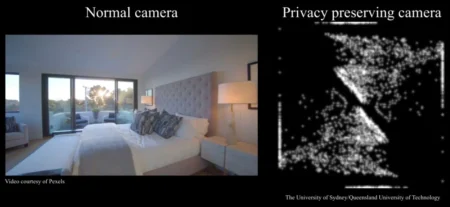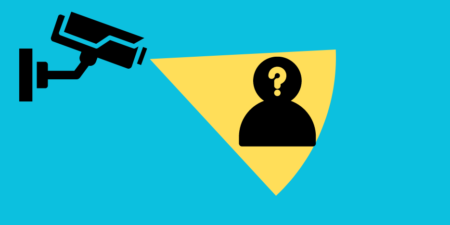A privacy preserving camera might sound like a contradiction, but newly developed technology could make it a reality.For many of us, privacy is an ongoing concern as technology seems to encroach ever further into our personal lives. From data collection to AI; ‘smart cars’ to autonomous drones, it is becoming harder and harder to protect our identities while engaging in daily life.
But new research from the University of Sydney and Queensland University of Technology (QUT) could provide a way forward for privacy preserving technology. Researchers from the Australian Centre for Robotics at the University of Sydney, and the QUT Centre for Robotics have developed a new approach to designing cameras that visually distorts images before they are digitised, preventing them from being recognisable to human eyes.
Devices like robot vacuum cleaners, baby monitors, and autonomous drones use cameras to navigate or process information. However, they do not process this information in the same way that the human eye does. This means that the images captured by the devices can be scrambled to the point of anonymity for us, while still being useful for the devices themselves.

Digital devices increasingly rely on internet connections to carry out many of their functions or receive software updates. This can make these devices vulnerable to hackers hoping to access sensitive or compromising information.
A defence against hackers?
While privacy preserving techniques have previously existed for these devices, they have relied on scrambling the image after it is already captured by the camera. This means that, if the device is hacked, the image can be retrieved before it is scrambled. The new approach designed by the University of Sydney and QUT researchers scrambles the image as it is being captured by the camera, so that a complete image is never stored on the device.
The researchers even tried to reverse engineer the process and hack their own camera to reproduce a recognisable image but were unable to overcome their own design. They have now invited the broader research community to try and hack their devices.
If this new approach proves to be successful, the next step will be for regulators to step in and ensure that privacy preserving technology becomes the norm. Unfortunately, technology tends to develop much faster than the rules that regulate it, and businesses are often put in charge of writing their own rules. However, as surveillance becomes more widespread by both businesses and Governments, misuses of technology are becoming more widely known, leading advocates to call for stronger protections for the public.
Here’s hoping the regulators heed the call.
For many of us, privacy is an ongoing concern as technology seems to encroach ever further into our personal lives. From data collection to AI; ‘smart cars’ to autonomous drones, it is becoming harder and harder to protect our identities while engaging in daily life.
But new research from the University of Sydney and Queensland University of Technology (QUT) could provide a way forward for privacy preserving technology. Researchers from the Australian Centre for Robotics at the University of Sydney, and the QUT Centre for Robotics have developed a new approach to designing cameras that visually distorts images before they are digitised, preventing them from being recognisable to human eyes.
Devices like robot vacuum cleaners, baby monitors, and autonomous drones use cameras to navigate or process information. However, they do not process this information in the same way that the human eye does. This means that the images captured by the devices can be scrambled to the point of anonymity for us, while still being useful for the devices themselves.

Digital devices increasingly rely on internet connections to carry out many of their functions or receive software updates. This can make these devices vulnerable to hackers hoping to access sensitive or compromising information.
A defence against hackers?
While privacy preserving techniques have previously existed for these devices, they have relied on scrambling the image after it is already captured by the camera. This means that, if the device is hacked, the image can be retrieved before it is scrambled. The new approach designed by the University of Sydney and QUT researchers scrambles the image as it is being captured by the camera, so that a complete image is never stored on the device.
The researchers even tried to reverse engineer the process and hack their own camera to reproduce a recognisable image but were unable to overcome their own design. They have now invited the broader research community to try and hack their devices.
If this new approach proves to be successful, the next step will be for regulators to step in and ensure that privacy preserving technology becomes the norm. Unfortunately, technology tends to develop much faster than the rules that regulate it, and businesses are often put in charge of writing their own rules. However, as surveillance becomes more widespread by both businesses and Governments, misuses of technology are becoming more widely known, leading advocates to call for stronger protections for the public.
Here’s hoping the regulators heed the call.
